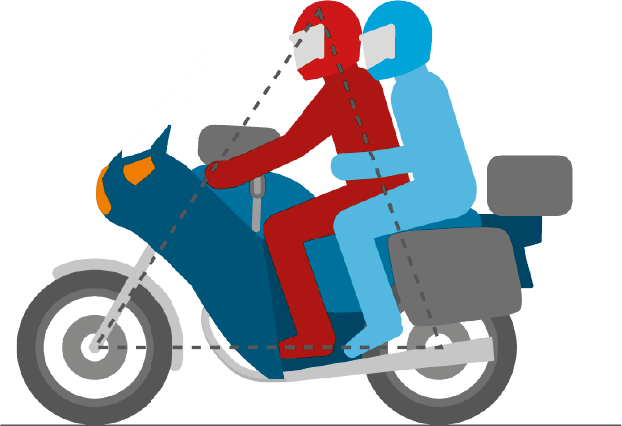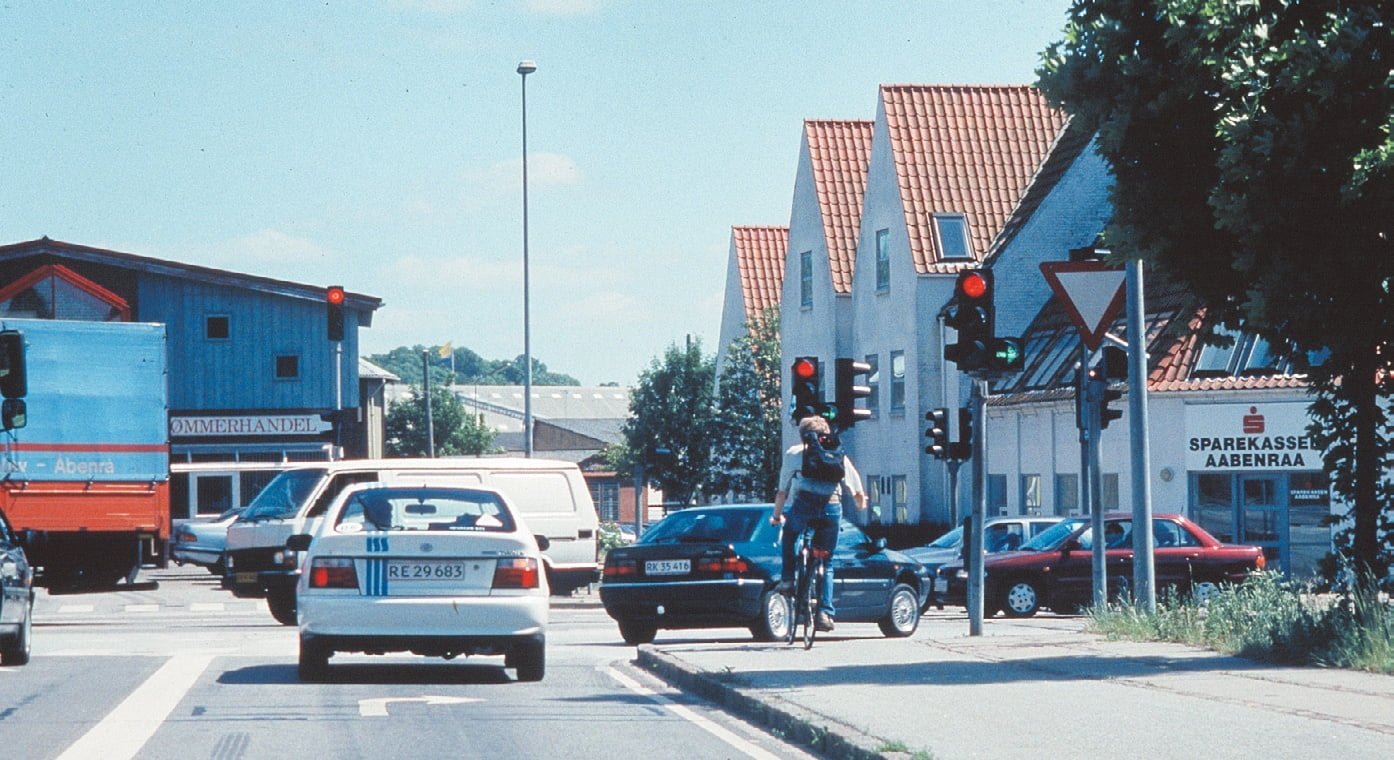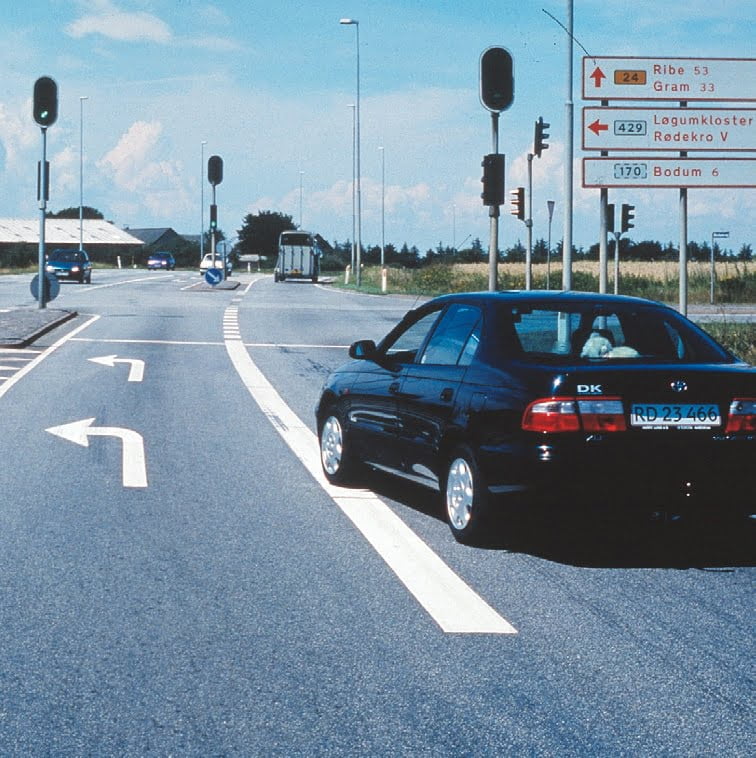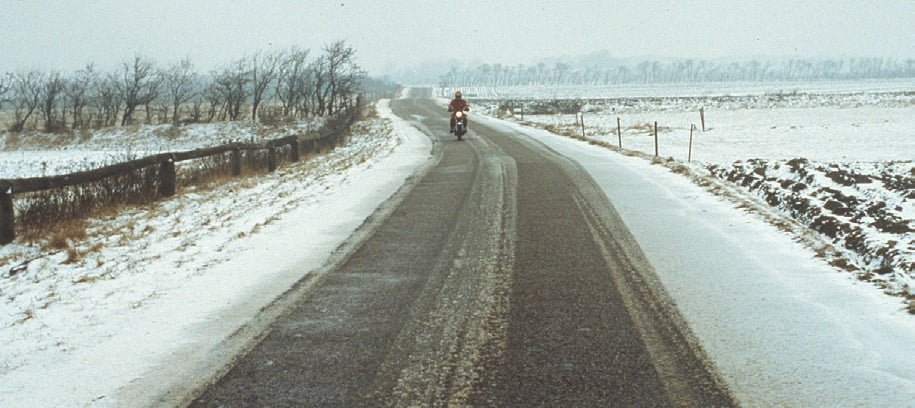motorbike
Driving school
theory book
to category A
Chapter 3: General information about traffic and traffic
For this chapter you will need the driving school theory book for category B. In the first chapters, you have read about the motorbike itself. And how to check that it fulfils various legal requirements. You've also learnt what it's like to be a motorcyclist. You have learnt something concrete. But before you get out on the road with your motorcycle, it's important that you also know something general about traffic and driving. You are an important participant in traffic, and so are your fellow road users. Together, you need to make traffic flow safely and smoothly. The more you have a feel for traffic yourself, the easier it is.
Manoeuvrability and orientation conditions
Try noticing a busy road one day. It's swarming with people. Cyclists, drivers, pedestrians and other road users. They're all going somewhere. And all at different speeds. Some are travelling at speed, others are almost creeping along at a snail's pace. Different vehicles have different manoeuvrability. Some are lightweight and can react quickly if a dangerous situation arises. Others are heavy and can't stop or turn quickly. It's all about the vehicle's manoeuvrability. We rarely notice it, but traffic - it's just something that drives. And it has to drive, but it's important that you know how. If you know something about the conditions of other road users in traffic, it is easier for you to anticipate - and thus avoid - hazards and accidents. Read the chapter in the driving school theory book for category B called "Vehicle manoeuvrability". It gives you examples of how traffic is affected by the characteristics and limitations of the vehicles themselves. But of course, traffic is also affected by the people in or on the vehicles, i.e. the road users. Therefore, you also need to have some sense of road user behaviour.
Traffic behaviour
Road user = human in traffic. And most of them are ordinary people. Therefore, you can say something general about the way they behave and react in traffic. You need to know what happens when a person recognises a dangerous situation or perhaps recognises it too late. You should also have an insight into how to judge speed, distance and other road users.
You need to read about these 'soft' topics in the driving school theory book for category B. The chapters are called "A little road psychology for drivers" and "Behaviour of other road users". Read them and become a tolerant and thinking motorcyclist! Traffic and road safety is very much about the people on the road, but it is also about the traffic environment, i.e. the roads.
Road conditions
You need to learn to recognise the types of roads and stretches that can be particularly tricky or dangerous. You can also say something general about them.
You can read more about this in the Driving School's theory book for category B, in the chapter called "Road hazards".
Basic rules for driving on motorways
Before you get out on the road, you should also be familiar with the general legal regulations for driving a motorbike. Unfortunately, there are some road users who don't know how to co-operate with a motorcyclist in traffic. Some of them may have bad experiences, others may be unsure. By knowing the requirements in the Highway Code that relate to the motorcyclist's behaviour, you can avoid many unfortunate situations. For example, you must be able to distinguish between being a "danger", "inconvenience" or "unnecessary inconvenience" to other road users. You can read more about this topic in the Driving School's theory book for category B in the chapter entitled "Basic rules for driving". But here and now you can read about the rules for travelling with a passenger or cargo on a motorcycle.
§ In the registration certificate you will find the authorised gross weight of the motorcycle. The law states that the combined weight of the motorcycle, passenger and cargo must not exceed the maximum authorised gross weight. In addition, passengers and cargo must be positioned in such a way that the driver can manoeuvre safely and with a clear view to the front and rear.

By law, passengers must sit with one leg on each side of the motorbike. And it is your responsibility to ensure that children between the ages of 8 and 15 wear a fastened helmet.
The motorbike is largely controlled by the body. Therefore, you need to make sure your passenger understands how important it is to follow your lean when cornering. The passenger should also make sure to sit close to your back and either hold on to you or a handlebar.
§ By law, cargo on a motorcycle may not cover the indicators, licence plate and lights. It must be secured so that it does not fall off, drag along the road and risk getting caught in the wheel. Any cargo that extends more than 1 metre beyond the front or rear of the motorcycle must be marked. Never use your motorcycle to pull a person alongside you on a bicycle, on the back of a sled or on roller skates, for example. And the motorbike must also never be towed by another vehicle. The law states that at least 25% of the service weight (kerb weight of the motorcycle + operating equipment + driver's weight) must be on the front wheel. You should be aware of this if you need to carry a lot of luggage. The more weight you bring forward towards the centre, e.g. in a tank bag, the better it is for the steering. If the motorbike is heavily loaded at the rear, it will be sensitive to crosswinds. Finally, make sure you pack so that the motorbike is equally heavy on each side. One, two, three! The loading triangle is a good model to keep in mind when packing your motorbike. See the figure at the top of the page. Once you've said A, you have to say B! To learn more about the topics in this chapter, read more in the B book.
Test your knowledge
Cat. A - Section 3
Select the questions you think are the right ones.


